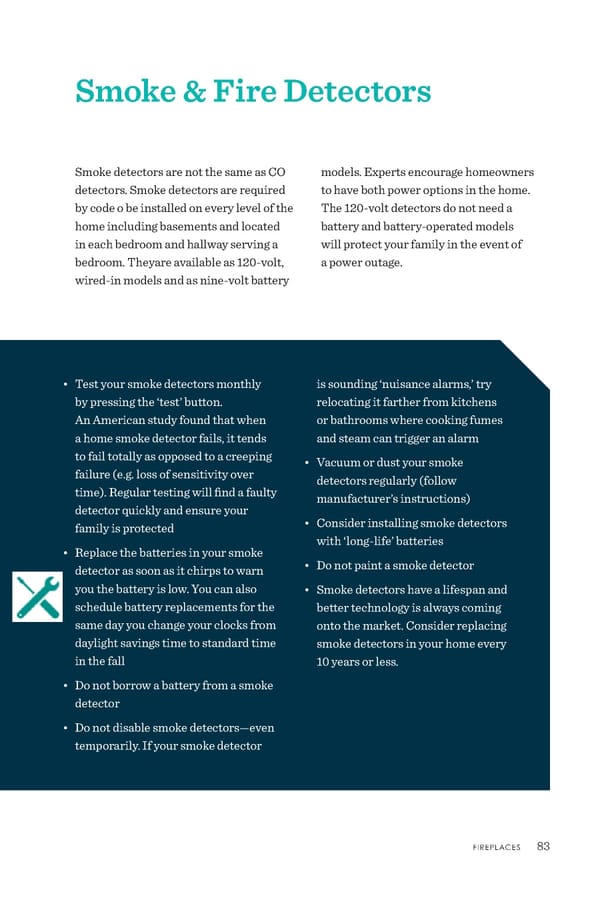Smoke & Fire Detectors Smoke detectors are not the same as CO detectors. Smoke detectors are required by code o be installed on every level of the home including basements and located in each bedroom and hallway serving a bedroom. Theyare available as 120-volt, wired-in models and as nine-volt battery models. Experts encourage homeowners to have both power options in the home. The 120-volt detectors do not need a battery and battery-operated models will protect your family in the event of a power outage. • Test your smoke detectors monthly by pressing the ‘test’ button. An American study found that when a home smoke detector fails, it tends to fail totally as opposed to a creeping failure (e.g. loss of sensitivity over time). Regular testing will find a faulty detector quickly and ensure your family is protected • Replace the batteries in your smoke detector as soon as it chirps to warn you the battery is low. You can also schedule battery replacements for the same day you change your clocks from daylight savings time to standard time in the fall • Do not borrow a battery from a smoke detector • Do not disable smoke detectors—even temporarily. If your smoke detector is sounding ‘nuisance alarms,’ try relocating it farther from kitchens or bathrooms where cooking fumes and steam can trigger an alarm • Vacuum or dust your smoke detectors regularly (follow manufacturer’s instructions) • Consider installing smoke detectors with ‘long-life’ batteries • Do not paint a smoke detector • Smoke detectors have a lifespan and better technology is always coming onto the market. Consider replacing smoke detectors in your home every 10 years or less. FIREPLACES 83
 ANHWP Care & Maintenance Guide 2022 Page 84 Page 86
ANHWP Care & Maintenance Guide 2022 Page 84 Page 86